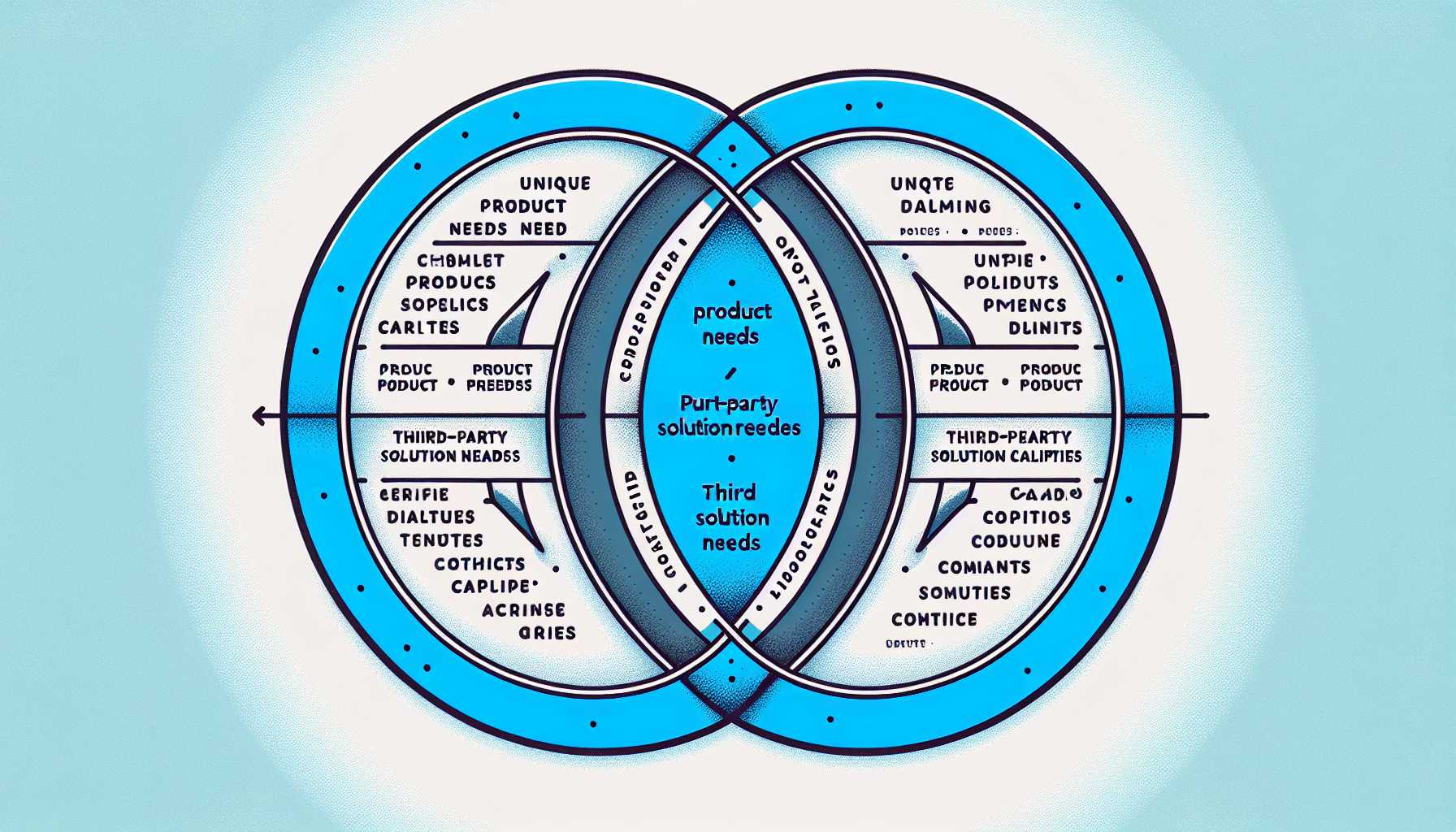Custom vs. Third-Party: Navigating the Crossroads of Product Development
Welcome to our product management deep-dive series, where we unravel the complexities of our craft. Today, we tackle a pivotal decision all product managers face: the choice between building custom solutions and opting for third-party integrations.
Understanding the Landscape
Imagine a Venn diagram with two overlapping circles: one representing the unique needs of your product and its users, the other mapping the capabilities of existing third-party solutions. The intersection of these two domains is the sweet spot we often aim to hit. However, the path to that convergence can be fraught with technical, strategic, and financial considerations.
Considerations for Custom-Built Solutions
Custom solutions offer the allure of differentiation and tailored functionality. However, they come with significant responsibilities and costs.
Pros:
- Competitive advantage: Custom solutions can be a powerful differentiator. For instance, a bespoke analytics platform can provide unparalleled data segmentation, becoming a key selling point.
- Control and customization: In-house development gives complete control over the feature set and user experience, enabling agility in rapidly changing markets.
- Intellectual property: Developing your own solutions can lead to valuable IP, bolstering your company’s valuation.
Cons:
- Resource intensity: Custom solutions devour resources for creation and maintenance. Budget overruns are common when venturing into uncharted coding territory.
- Time to market: Custom development generally takes longer, potentially slowing down product momentum and giving competitors an edge.
- Scaling and updating: Scaling custom solutions can be challenging, especially if premature optimization decisions lead to technical debt.
Considering Third-Party Integrations
Third-party integrations offer pre-constructed modules that can accelerate development and focus your team on core competencies. However, they may introduce dependencies that complicate product evolution.
Pros:
- Rapid deployment: Integrations allow you to leverage existing technology quickly. A stalled project can be revived by integrating a third-party analytics engine.
- Cost-effectiveness: Integrating a third-party service is often cheaper upfront than building from scratch, freeing up capital for other initiatives.
- Reliability and support: Established third-party solutions bring a level of reliability and support that can be reassuring, especially in critical functions like payment processing.
Cons:
- Less differentiation: Using widely available integrations might commoditize your product features, making it more difficult to stand out in a crowded market.
- Dependence and risk: Third-party integrations bring the risk of dependencies on external companies’ roadmaps and stability. A sudden change in their pricing or policies can be disruptive.
- Integration challenges: Technical and cultural integration issues might occur, sometimes resulting in a patchwork product that lacks cohesiveness.
Frameworks for Decision Making
Overcoming the build vs. buy paradigm requires strategic decision-making. Here are two frameworks that have proven essential:
1. The Opportunity Cost Framework
Consider the opportunity cost of custom development—what could your resources achieve if not spent on it? This was pivotal in deciding to integrate a CRM system instead of building one, allowing my team to focus on core algorithms.
2. The Risk Assessment Matrix
Analyze risks associated with both custom solutions and integrations. Visualize the likelihood and impact of each risk in a matrix format. This quantifiable perspective influenced a decision to avoid an integration with a high risk of vendor lock-in, protecting our product’s autonomy.
Striking the Balance
Striking the balance between custom-built solutions and third-party integrations is an art and a science. Here’s the approach I’ve adopted:
Assess Core Competencies
Identify what is genuinely core to your product’s value proposition and user experience and hold tightly to customizing these elements.
Be Realistic About Your Capabilities
Examine your team’s expertise and bandwidth. If you can’t excel at it, it’s okay to entrust it to those who can.
Remain Agile
Remain open to switching between custom solutions and third-party integrations as your product evolves. Sometimes, building a temporary bridge with an integration can serve immediate needs while you develop a more robust in-house solution.
Concluding Thoughts
Your product’s journey is unique. The decisions you make at the crossroads of custom versus third-party will influence its narrative. Choose wisely, balance strategically, and iterate relentlessly.
Until we meet again in our next exploration into product management intricacies, keep building, keep integrating, and above all, keep learning!

